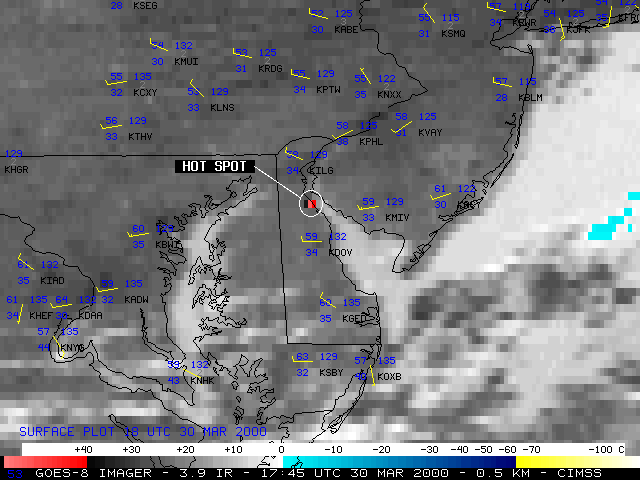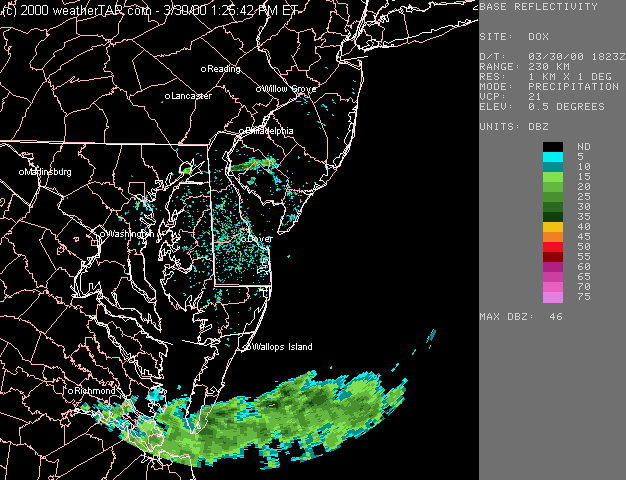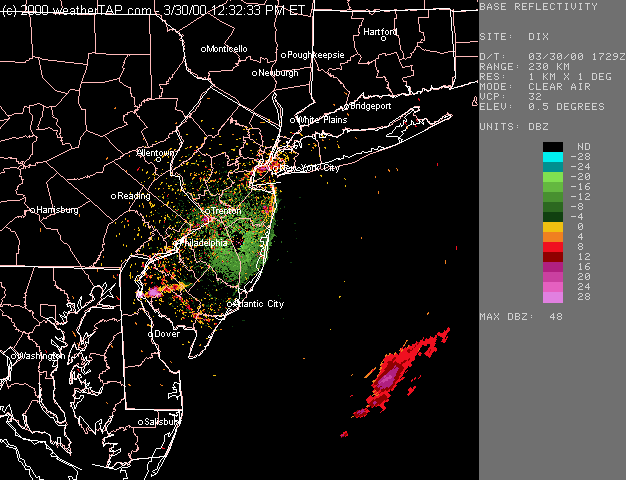
|
|

|
|
A brief "hot spot" (black to red enhancement) was evident on the NOAA GOES-8 3.9 micrometer shortwave InfraRed (IR) channel (above left) over northern Delaware at 17:45 UTC, due to a controlled-burn fire near Odessa. IR brightness temperature values were as high as 325.7 K (52.6 C) in the region of the hot spot. No smoke plume was apparent on the GOES-8 visible imagery (above right), but a distinct plume could be seen moving east-northeastward on both the Dover DE (KDOX) and the Philadelphia PA (KDIX) WSR-88D radars (below). Forward trajectories from the NOAA Air Resources Laboratory suggest that this transport regime would be expected at about 1000-1500 meters above ground level, near the level of the Lifted Condensation Level (LCL) on the morning Wallops Island VA rawinsonde report.

KDOX WSR-88D reflectivity
|

KDIX WSR-88D reflectivity
|
(NIDS radar products provided by WeatherTap)
